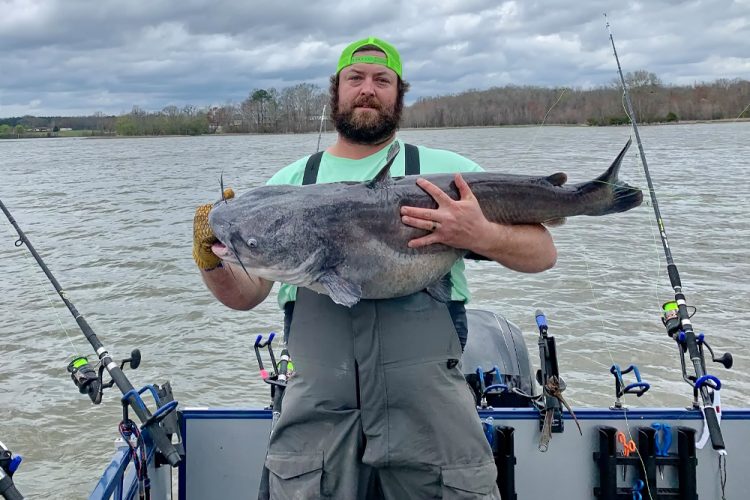Catfish Basics #162—with Marshall Hughey
With the cooler months upon us, I start looking for shallow-water flats adjacent to deeper-water channels or holes. When the water temperature starts dropping, catfish will hold along these areas, using the deeper water for warmth during the nighttime and ambush points to feed during the daytime when the shallow water warms up.
I’ve had great success in water as shallow as two to three feet deep during the winter months. Among the most important things I look for are plenty of schooling baitfish. I believe fresh live bait used in clear-water conditions works best. In muddy to stained water, fresh cut-bait seems to work better than a live swimming bait. I always use bait that’s native to the body of water I’m fishing.
When positioning my boat on a flat, I determine the direction of the wind if there is no current and set my boat up on the upwind side of the flat. This allows me to use the wind in my favor to help carry the scent from my bait across the flat.
I use a couple of different rigs when fishing shallow water. I put a couple of baits on the bottom and a couple on a floating suspended rig using big corks. I prefer using spinning reels in shallow water because I’ve had better luck casting farther with them versus a baitcaster when using live or cut shad for bait.
Midday to evening fishing has worked better for me in the winter time, working the shallow water after it’s had the most time to warm up during the daylight. That’s when I’ve discovered the fish to be most active. Structure doesn’t seem to be as important in the shallow water as the fish are just chasing the baitfish that are schooling. It’s actually very exciting to get hooked up on some big cats in shallow water as they can’t dive down and will often run and jump up out of the water, making for a spectacular fight.



